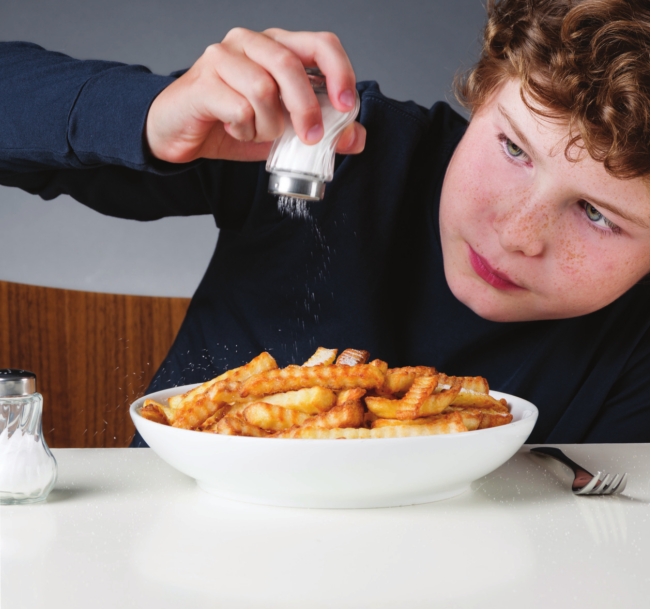
Sodium intake should be monitored
DIET & NUTRITION
The other day I watched my 7-yearold daughter reach for the salt shaker at a restaurant. We do not salt food at home, so I wondered where she picked up this habit. She gave me a light-hearted response about seeing someone do it at school. While I don’t expect this to be entirely accurate, it made me wonder about her eating habits – more specifically, the added sodium in her diet.
Sodium is a necessary nutrient.
It is needed to maintain correct volume of the circulatory system and to help to carry molecules across cell membranes. Our body will help to maintain appropriate sodium levels regardless of sodium intake. Excess sodium is typically excreted out of the bloodstream via the kidneys, while some is lost through sweat. However, if kidney function diminishes, so does the kidneys’ ability to filter excess sodium from the blood stream. This can cause fluid retention and increased stress on the cardiovascular system. While most children do not have to worry about diminished kidney function, sodium intake should still be monitored.
According to the Centers for Disease Control and Prevention, about one in nine children has increased blood pressure, and several studies have linked sodium intake to high blood pressure. In an article published in the Pediatrics Journal, sodium intake can be linked to prehypertension in children leading to full-blown
hypertension by adulthood. This risk is increased in children who are
overweight or obese. Another important thing to consider is exposure to a
highsodium diet will shape a child’s diet preference. The risk for
hypertension might not be an issue for children and adolescents, but as
we age, the risk for hypertension increases, and if your diet has been
shaped to include salt-laden foods, your risk for hypertension will be
even higher!
So how much is too much?
According
to the 2015 Dietary Guidelines, anyone over the age of 14 should limit
sodium intake to 2,300 milligrams (mg)/day. However, children ages 4-8
should limit sodium intake to 1,900mg and children 9-13 should limit
intake to 2,200mg. Almost 90 percent of children consume more than
2,300mg per day based on data collected in the 2011-2012
National Health and Nutrition Examination Survey. The average sodium
intake among children was 3,256mg per day, and this does not include
salt added at the table. The top 10 sources of sodium came from pizza,
Mexicanmixed dishes, sandwiches, breads and rolls, deli meat, soups,
savory snacks, cheese, milk and poultry (chicken nuggets).
If
you or your child is eating over the recommended sodium limit, it is
important to reduce salt intake. Start by reading food labels,
especially foods consumed on a regular basis. Look for foods considered
low sodium, which is less than 140mg per serving for an individual item,
or 600mg per meal. Select fresh and frozen over canned or items with no
added salt or sauce. Find salt-free seasonings to use at home such as
garlic powder, onion powder, lemon or lime juice, or salt-free seasoning
blends. Prepare things such as rice, beans and potatoes from scratch
instead of buying instant packets, as well as season meats at home
instead of buying pre-seasoned. Have your kids help in the kitchen,
which will likely increase their interest in the foods prepared. Lastly,
limit eating out as much as possible.
While
your little one’s salt intake might not be a big concern to you now,
lowering salt intake in the whole family’s diet can hopefully set your
children up for a low-sodium diet and healthy blood pressure in the
future.
Alicia Smith, RD, CDE, is affiliated with Willis-Knighton Health System.
She may be reached at [email protected].